Government trail closures in Moab pit environmentalists against drivers
A plan announced this fall by the Bureau of Land Management (BLM) to curtail off-road driving near the beloved Jeeper haven of Moab, Utah, has pitted environmentalists against a growing number of recreational trail drivers. It seems like nobody will get exactly what they want, which is perhaps by design.
The plan, announced on September 28 and due to take effect at the end of October, unless a pending court challenge prevents it, closes to motor vehicles 317 miles of unmaintained road and dirt two-track trails in a particularly scenic area northwest of the outdoorsy berg of Moab. Other trails have new restrictions.
The plan was spurred generally by a dramatic increase in off-roading in recent decades and in particular by a 2017 court settlement with the local Southern Utah Wilderness Alliance, an environmental group. The Wilderness Alliance had sued the BLM to force the federal agency to develop and implement an updated plan for preserving the landscape.

Though the federal plan only addresses about 28 percent of the miles of trail in that particular area, Jeepers and enthusiasts of off-highway vehicles (OHVs) and UTVs (utility-terrain vehicles, or “side-by-sides”) complain that it all but freezes them out of the best parts of this landscape by greatly reducing motorized access to the Green River and some of its tributaries. In these areas, the waterways cut dramatic, thousand-foot-deep canyons that wind through ancient formations of ochre-colored Navajo, Kayenta, and Wingate sandstone.
“There’s no other way to say this. The travel plan is the worst defeat motorized recreation has suffered in decades,” wrote Patrick McKay of Colorado Off-Road Trail Defenders on the group’s Facebook site. “Almost every major trail west of Moab is closed, including Day Canyon Point, Hey Joe Canyon, Mashed Potatoes, Ten Mile Canyon, Hell Roaring Canyon, Mineral Canyon, 7-Up, two of the three overlooks on Deadman Point, and many more.”


The so-called Labyrinth Rims Gemini Bridges Travel Management Area consists of 812 miles of off-road routes spread out like a spider’s web over 300,000 acres of desert and canyon in Utah’s Grand County, which includes Moab. It is only a tiny part of the whopping 42 percent of Utah that is under the administration of the federal Bureau of Land Management, which often finds itself squeezed between conservationists in the state who want to keep the landscape wild and those who wish to recreate in it or exploit it for its commercial potential.
The Labyrinth Rims area has long been used for cattle grazing as well as uranium mining, and it is now spotted with natural gas drilling pads that in recent years have encroached ever closer to the nearby Canyonlands National Park. Meanwhile, Moab has become a thriving tourist hub that caters to visitors of all stripes wanting to engage with a majestic landscape formed over millennia by wind, water, and geologic upheaval. Along its main drag are numerous businesses renting Jeeps and UTVs as well as offering guided off-road tours. In March, tens of thousands of off-roaders converge on the town for the Easter Jeep Safari, an event so important on the Jeeping calendar that Stellantis, which owns the Jeep brand, uses it to debut new designs.
A city of 5000 permanent residents but millions of visitors annually, Moab is unquestionably a victim of its own success. Nestled in the scenic Spanish Valley next to the Colorado River, where it meanders below sheer cliff faces on its way to Glen Canyon and the Grand Canyon, it was for decades a dusty backwater that never fully recovered from the bust of the uranium mining rush in the 1950s. At least, until the rock climbers, river rafters, backpackers, and Jeepers discovered it in more recent years.
A massive national ad campaign, along with the arrival of commercial airliner service and a hotel-building spree in the 2010s, resulted in a tsunami of visitors from all over the world. After an initial slowdown early in the 2020 pandemic, tourism rebounded hard, with ensuing traffic jams, sold-out hotels, and overwhelmed eateries.
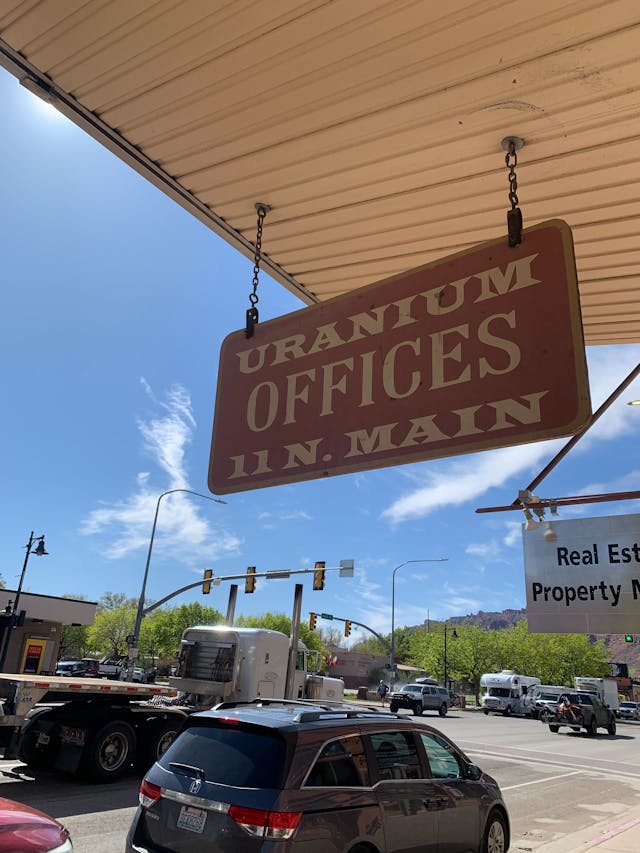
The nearby Arches National Park was forced to create a reservation system to stanch the long lines that daily formed at its gate, and many of the town’s inhabitants have turned sour on its tourism industry, voting in a city council that has tightened noise and speed restrictions and even moved to kick out an Easter Jeep-like festival that was just for ATVs. The crush in Moab has spurred other Utah towns to revise their master plans to limit tourism. In Bluff, a hundred miles to the south, a popular bumper sticker reads “Don’t Moab my Bluff.”
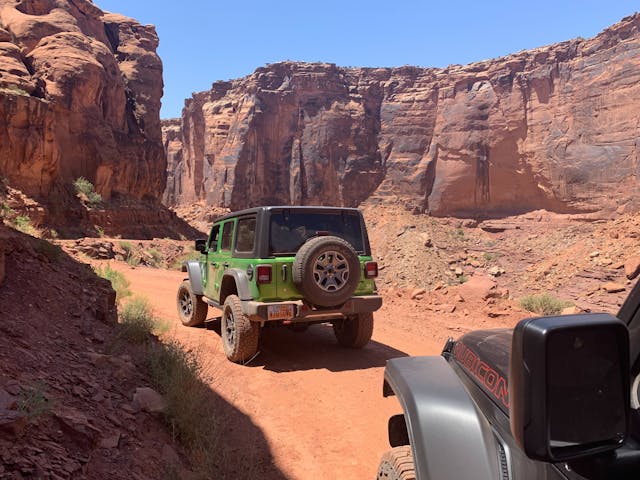
Having spent years visiting the area and traversing the trails in question, your author can attest to the gobsmacking grandeur of spots like the Hey Joe and Hell Roaring canyons. And as well to the fact that the volume and speed of the vehicle traffic on Moab’s trails has grown exponentially, especially since the pandemic. That has had deeply negative side effects in terms of trail erosion and trash.
In the old days, when relatively few people braved this wilderness in crude and hard-riding 4x4s such as Jeep CJs and Toyota FJ40s, the speeds were necessarily slow and the impact on the landscape was minimal.
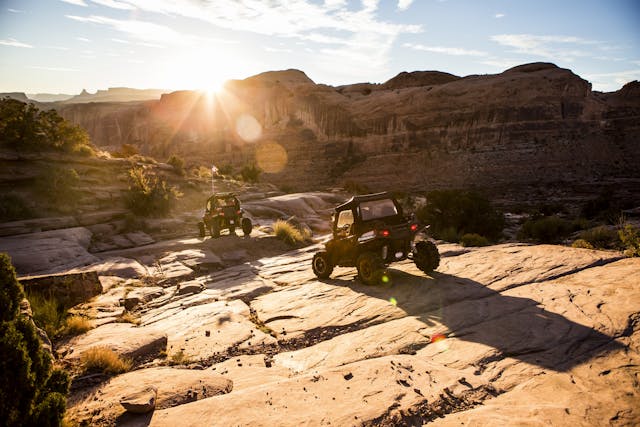
Nowadays, the burgeoning off-road, powersports, and overlanding industries are eager to supply enthusiasts with high-horsepower vehicles that have giant indestructible tires, rut-smoothing suspensions, and future-tech camping amenities. Modified Jeeps and purpose-built side-by-sides give legions of visitors the ability to effortlessly cruise Moab’s outback, often moving at 40 or 50 mph at the pointy end of huge dust clouds. In their wake: denuded trails, flattened brush, human waste, and camping fire rings sprinkled with trash.
Though many Jeep clubs work hard to maintain trails and set high standards for land stewardship, they only represent a fraction of Moab visitors, some of whom exhibit no concern for the land whatsoever. The BLM’s job isn’t to keep people out of wild places, exactly, but rather to balance the needs of the land with those of the visitors and residents. The BLM’s trail-closure plan for Moab seems to be making the case that not every spot on Earth, or even in Utah, needs to be accessible by a motorized vehicle. Whether it remains in place is now up to the courts.
***
Check out the Hagerty Media homepage so you don’t miss a single story, or better yet, bookmark it. To get our best stories delivered right to your inbox, subscribe to our newsletters.

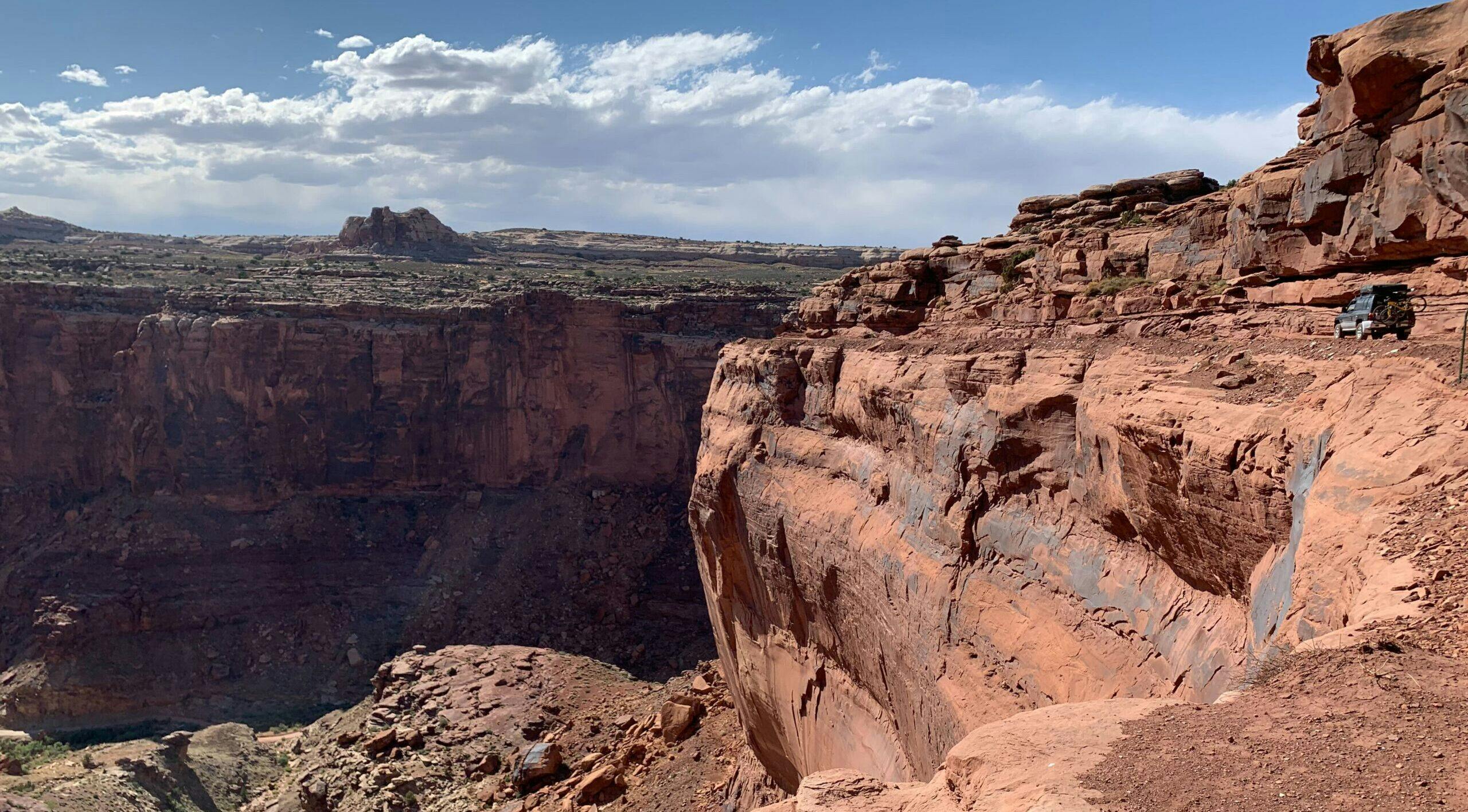
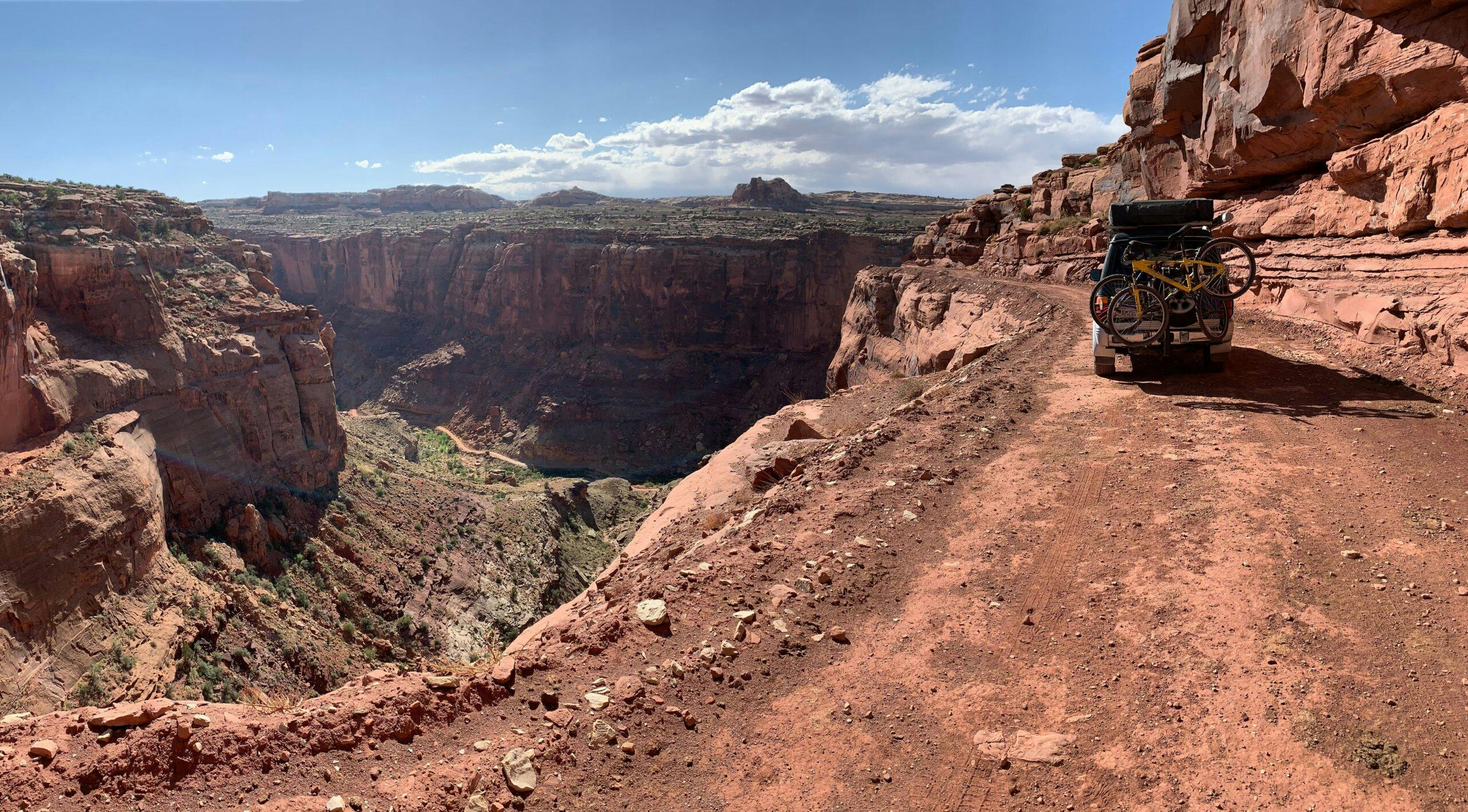


Humans complain about rules, laws and other restrictions on their freedoms and behavior but we only have ourselves to blame. Too many negligent idiots destroying the earth’s wonders.
Well balanced piece, Aaron. I am of the SUWA variety, long time vacation home owner south of Moab in Monticello: “Utah’s least exciting town.” Several generations of my family have enjoyed the red rock canyon country on foot. A look at the BLM’s map shows nearly all the closures will leave parallel road routes as well as impress one with present degree of “over roadedness.” No one needs to reach every square inch of that area by motor, not even by foot.
Where I live they closed the cool off road trail area 100%.
It can be done worse than what this article talks about.
Typical federal overreach. Too lazy to regulate the bad apples so screw everyone. It’s like when one kid in class does something bad but the teacher can’t figure out who, so the brainless teacher punishes the whole class for a week. All that does is make EVERYONE hate the teacher.
There’s already so many places my father took me in the 70s and 80s for camping and hiking that are either straight up forbidden now or they’ve been paved over so you can “camp” from a Prius for $35 a night without ever stepping on dirt.
Outdoors is dead and environmentalists killed it. No wonder all our kids can only sit at home on their tablet doped up on Ritalin.
Let’s not blame environmentalists for having-it-all types having kids but unwilling to spend time with them, feeding them corn syrup, sugar, animal and dairy products, dropping them on overworked, underpaid teachers who make less than junior execs at RJ Reynolds or Philip Morris and expecting wunderkind.
Outdoors is hardly dead. It’s available by foot, bicycle, horseback, mule. A third of Americans are not just fat, but clinically morbidly obese, and today’s kids are the first generation in human history that will live shorter lives than their parents, people in their 20s and 30s exhibiting diseases once the province of those over 50, 60, 70.
If anyone wants to go bump-da-bump where the pavement ends, let them join the Army. Our national parks and open spaces are supposed to be free of noise, engines, stereos, boom boxes, trash, portable TVs, Coke machines. Stay home in the ‘burbs if that’s what you want.
Some of us are legitimate disabled need a vehicle, horses are far far worse and dangerous. Please stop talking about things you do not understand.
The more they close, the more peiple will be on what is open and the more they will close it. Environmental idiots lotterally want to shut it all down. They will not say it out loud often but they do say it. The government is actively working to turn you into a tax drone that works and recreates on the web. They have said it. 15 minute cities. They want full control.
The fact I can drop off the map irrites these people. They are the ultimate nanny what are you doing now, come watch my lame puppet show people.
They have the resources to manage the bad apples, they don’t want to, they would rather shut it down.
These trails do not take much maintenance. In fact, they were unmaintained for decades.
They have tried to make it illegal to air down your tires because you brought in out of state air that might be polluted. (Honest, look it up). There is no rationality to these people.
This is a case where both sides need to work better together.
The people who use this area need to be respectful and help police the area from those who do it harm. The Eviro people need to give enough to understand the more people involved in the land will bring more funds to support it.
And if no one is allowed in then the future gens will never appreciate it and do much more harm.
As a resident here in Moab, I can tell you that it is very easy to “love the desert to death” too many responsible or irresponsible visitors is too many and limits and changes are inevitable. But it may be helpful for people to understand a little about the BLM. They have management requirements that are basically 3 points on a triangle, all equal.
Make the land available for business and enterprise that is in the national interest.
Make the land available for recreation and enjoyment.
Preserve and protect the land for the long term.
These 3 prongs all have to coexist, the environment here is stunningly fragile and slow growing so management MUST be dynamic so that means some trail routes will change, wellheads will appear, cattle come and go. It’s all about BALANCE.
We have a beach here in Wilmington NC (Carolina Beach) that you can drive on. The littering is insane. Not saying I agree with the article, but people are gross.
Last year I was in western Colorado and thought about going to Arches and saw the horrible reservation system and decided screw it. So I went to Colorado National Monument instead. I was going to drive through, hike a little, no off-roading for me but Arches made that uncomfortable to try. Maybe this is what they need to do and maybe not. Part of this screams overreaction but I don’t know. Clearly this has become a problem.
Have said this is coming. Used to go out with friends/family, groups taking our Rhinos and RZRs out on trails. We stayed on the trails and traveled along at anywhere from 11 to 20 mph taking our time and enjoying the views and scenery. Top speed of the Rhino was only 34 mph. Then everything started to get bigger, even turbo and super charged. Now it’s a race to go anywhere, the speed makes it dustier, ruts getting deeper, so bad in areas they made new trails around the old. Have made their own trails and mowed down the shrubs. When the wind blows the entire areas a dust bowl. It changed from sightseeing to basically off road racing. Heck, the UTVs do 75 mph down the highway. Still have my old Rhino and don’t need the speed
I can really see the trash being an issue, few people have any respect for nature anymore, are they planning on doing anything more for for the trash situation, eg, dump areas, fines, something?
It will be beautiful again in those areas. Less noise, dust, exhaust. Let them take their toys somewhere else, and get prohibited there too.
Hello Aaron I have been visiting Moab for that last 10 years. Having just left this weekend I am not sure what planet you are from but everything you have stated from your article is incorrect. After recently spending 2 weeks in Moab and riding practically every trail, the only piece of trash I saw was one water bottle which I picked up. I am not quite sure what you are talking about by “human waste.” Is it possible you have mistaken Moab with another place? Just curious did you do any of the trails yourself or is this just hearsay from other people? As far as 40 or 50 miles an hour on the top of Hey Joe Canyon or Hells Roaring or any other trail is impossible and highly life threatening. I have just recently changed my collector’s policy to Hagerty which is insured for $929,000. With totally inaccurate statements which you have made want me want to go back to American Collectors.
This is an INSANE violation on all of us who use our public land, no matter what your hobby is. For those that want to keep vehicles out, you are making it impossible for so many folks with disabilities to enjoy their land. And for those that say “jUsT gEt OuT aNd HiKe iT,” please just stick to the PCT or any of the millions of miles of trails in our country dedicated only for you. The environmentalists, hikers and everyone else who is whining over OHV usage are really showing their lack of care/respect for others and their hobbies. Closure isn’t the answer. Better enforcement of jackasses is.